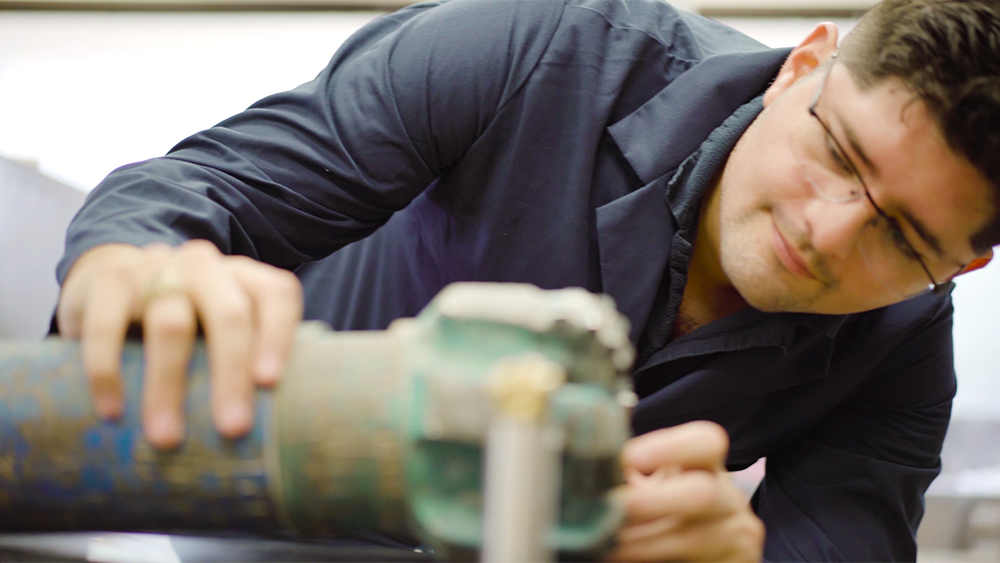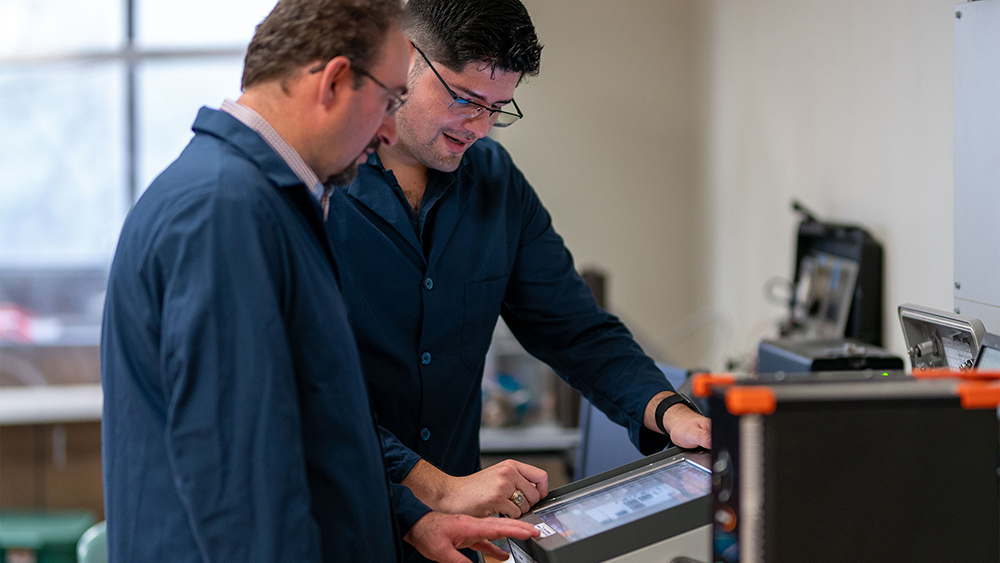
In petroleum engineering circles, the word unconventional typically applies to oil and gas reservoir classification, but it could also define Enrique Losoya's educational and internship experiences at Texas A&M University.
As a doctoral student in the Harold Vance Department of Petroleum Engineering, Losoya has passionately explored the idea that a multidisciplined approach to science and math in each engineering discipline develops a better understanding of all disciplines and how they relate to each other. This theory is why he was open to developing simulation, or visual modeling, software for machine-guided drilling deep underground, and using this same knowledge of math, science, and soil properties to assist in lunar landing simulations for NASA.
Growing up
Losoya grew up in Playa del Carmen, Mexico, where he helped with his dad's handicraft business. The income sent him to an academically ranked high school where he studied math and science, yet Losoya believed he would follow in his father's footsteps. A local businessman, who admired Losoya’s parents for their work ethic and hopes for their son’s future, financed his college education.
"I am the first in my immediate family to graduate college," said Losoya. "I was always into computers and making little robots in high school, so I wound up with a Bachelor of Science in mechatronics engineering from Modelo University."
...there are strong fundamental overlaps in engineering and science
Aggie impressions
While a student at Modelo, Losoya came to the mechanical engineering department at Texas A&M on an international undergraduate summer research experience. He had the opportunity to work on an exciting robotics project, but it was his Aggie doctoral mentor who truly impressed him.
"He was doing fancy math and simulations," said Losoya. "It was so exciting. He would grab a pencil and a piece of paper and start explaining. I wanted to be just like him someday."
Petroleum engineering path
After graduation, Losoya pursued a master’s degree in petroleum engineering because Mexico was encouraging oil and gas development. He was excited to discover the top-ranked petroleum engineering department was at Texas A&M. Since his bachelor's degree was not in petroleum engineering, Losoya had to take a few courses in the subject his first semester to catch up.
"Mechatronics mixes electronics, programming, robotics and mechanical engineering," said Losoya. "Taking petroleum courses taught me how the industry works, and I found drilling engineering was the way to go for me because it's more mechanical."

Academic track
Losoya chose Dr. Eduardo Gildin, associate professor and Class of 1975 DVG Developmental Professor, as his advisor because Gildin, with a background in aerospace and mechanical engineering, had similar passions for machine systems and unique skillsets in data usage that aligned with his ideas.
"I believe a drilling engineer for the future needs to know programming and data science to be able to generate new ideas and optimize whatever processes are in companies," Losoya said. "I'm not a conventional petroleum student and I needed a mentor who was compatible with that.”
During his time as a master's student, Losoya impressed Gildin with his research and growing leadership potential. In spring 2017, Losoya led a team of students to first place in an automated drilling competition known as Drillbotics. The team created a sensing and control system design that led to a patent application, and Gildin encouraged Losoya to enter the Ph.D. program that year.
Internship experiences
In the summer of 2017, Losoya accepted an internship with Intuitive Machines (IM), which provides autonomous system solutions to other companies. At IM, he was tasked with creating the downhole, torque and drag, and power pressure models needed for a client’s drilling simulator trainer.
"Downhole conditions have sustained vibrations, high G-force accelerations and magnetic interference,” explained Losoya. “We had to eliminate this noise in the data and filter it to estimate the positioning of the drill bit, in real-time, for the simulations. It was quite a challenge, but the client was happy with the results."
IM hired Losoya the next summer for a project from NASA involving a reusable lunar lander system. When he had doubts about his abilities to help, they assured him his knowledge would come in handy.
"I realized there were a lot of similarities with this project and my drilling research," he said. "I used an open-source numerical simulation engine I was working on for drilling and the same skills from the previous internship to develop simulations of the forces and gravity and soil dynamic interactions the lunar lander would experience on the moon.”
Automated drilling
Armed with a better understanding of modeling dynamics, generating artificial data sets and simulated data, Losoya was ready for the next challenge: helping his advisor on an autonomous drilling project with E-Spectrum for the Department of Energy.
They created a system that gathers data during actual drilling processes to accurately simulate real-time conditions underground. This way drilling operators can react faster to issues encountered downhole. The system features machine-learning capabilities, meaning drilling in the future could be guided by the system with minimal human oversight.
"The ultimate goal is automating the overall drilling process for safer and consistent operations," Losoya said. "We have the processing capacity and mature technology to automate drilling under harsh environments. Now NASA is talking about drilling on Mars."
Finding overlap
From underground to outer space, Losoya is keeping his mind open to future possibilities. He has also become the same encouraging Aggie mentor he admired years ago.
"Don't underestimate the opportunities A&M gives you," said Losoya. "Try to attend two or three different department seminars. The more you go to these presentations, the more you realize there are strong fundamental overlaps in engineering and science. It's the sum of the concepts and methods in these specializations that lead to innovative ideas that overcome most engineering challenges."